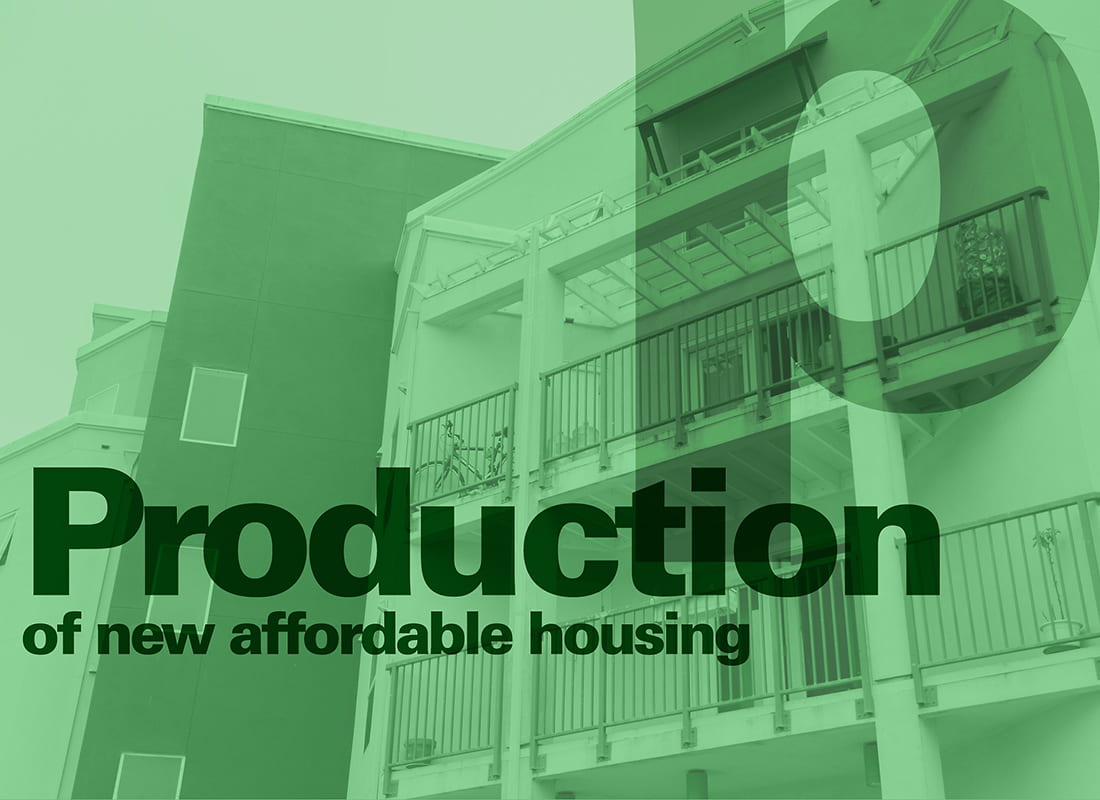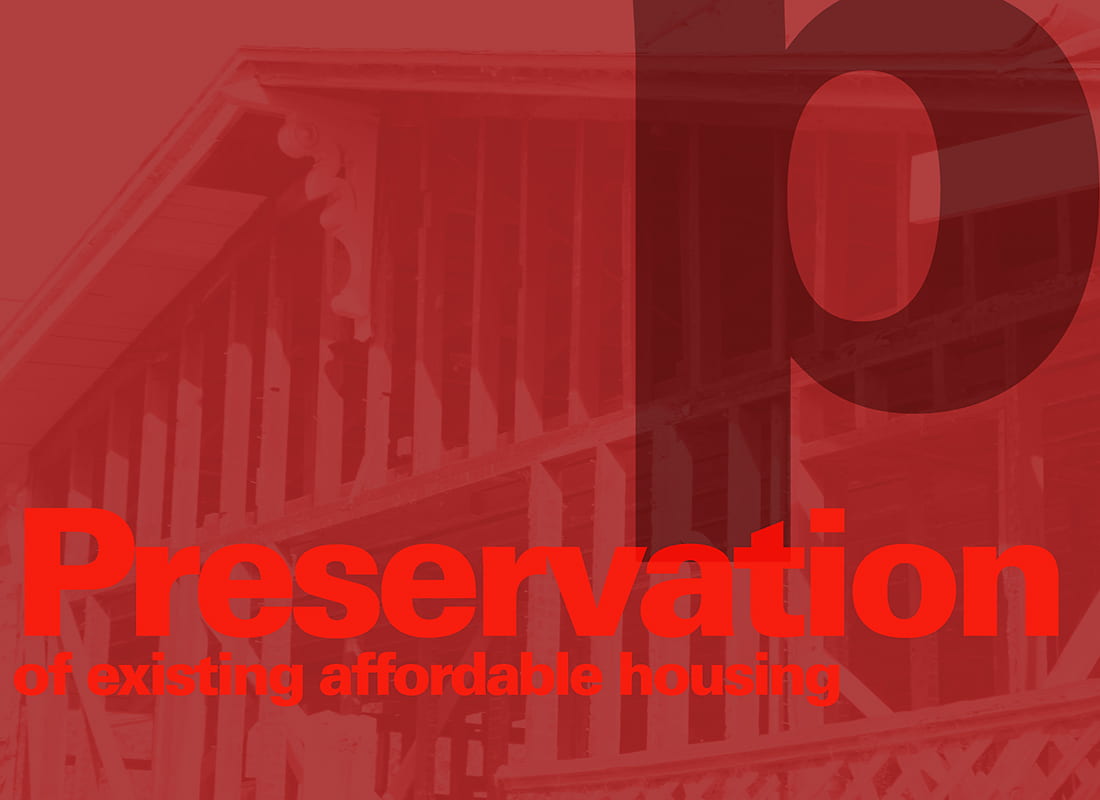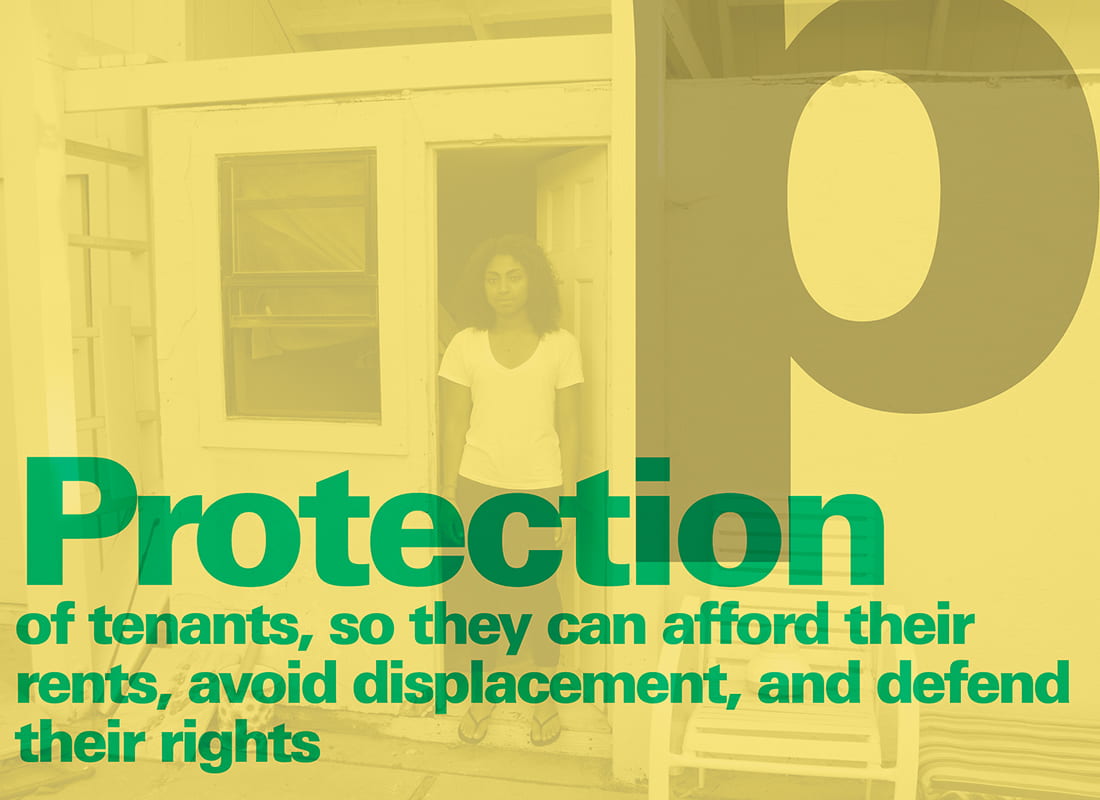Five Obstacles to Producing Affordable Housing
1. The first major obstacle to building new affordable housing in the U.S. is over 40 years of cuts to federal and state housing funding.
Consistent with a broader “neoliberal” rollback of redistributive, social welfare-oriented forms of public spending, the federal government halted all funding of new public housing in the early 1970s under President Nixon, while budgets for Housing and Urban Development —covering public housing maintenance, subsidies, and grants to states and localities—was slashed by over 70% in the 1980s under Reagan. Similar cuts have occurred at the state level, as when the Redevelopment Authority, the primary funding source for affordable housing in California, was eliminated by Governor Jerry Brown in 2012, causing state funding for affordable housing to drop by over 80%. [7]
2. As significant as overall decline in affordable housing funding has been the shift in the priorities of this funding, with support for multifamily rental housing increasingly replaced by support for single family homeownership.
Since WWII the bulk of the shrinking housing pie has gone to middle and upper income homeowners in the form of tax breaks. Housing scholar Alex Schwartz provides figures to illustrate the result. In 2012, 7 million low-income renters benefited from federal housing subsidies, yet 34 million homeowners took mortgage-interest deductions on their income taxes. And while federal expenditures for direct housing assistance was $47.9 billion, homeowner tax benefits exceeded $220 billion, with the lion’s share of these funds going to households with incomes over $100,000. [8] In California, where the scale of such deductions is greatest, the state now spends $929 per owner household versus $71 per renter household. [9]
3. Accompanying these trends, we have seen the increasing shift from public to the private sector in the provision of affordable housing.
This privatization itself is the third obstacle. It is common knowledge across the real estate industry that there is no profit to be made in building and maintaining affordable housing. In fact its almost impossible to break even, since the rents of the lowest income don’t cover basic costs for landlords and investors. As a result, as Schwartz explains: “almost all new, unsubsidized rental housing is built for upscale markets” while “owners of the affordable low-income housing that does exist are all too often left with two choices: gradually disinvest until the property becomes uninhabitable or reposition the property for higher income tenants.” [10, pgs 47-48] The lesson: don’t depend on the private sector to solve the affordable housing crisis. In the absence of significant subsidies or regulations, the private sector will always fail to provide sufficient affordable housing.
4. Further, this private housing stock has become increasingly financialized and precarious, creating a fourth obstacle.
As sociologist Susan Fainstein explains, financialization “allows controllers of capital flows, applying exchange values rather than use values, to determine what gets built, the scale of projects, where building takes place and how the existing building stock is treated.” Although investors always had disproportionate power in urban development, recent qualitative changes—in securitisation, disintermediation, global banking and ICT—have increasingly moved decisions over investment priorities from the local to the global level. Thus, investments fuel high-end real estate markets with increasing precision while local housing needs take a back seat. Fainstein argues this result is not inevitable, but rather occurs under neoliberal conditions in which the state abdicates its role to prioritize equity. [11]
5. A fifth and final obstacle is the devolution of responsibility for the building of new housing to cities and counties, where such efforts get mired in local politics.
To quote Betsy Wilson from MidPen, a nonprofit housing developer in Santa Cruz County, “production takes a minimum of five to ten years to build, under the best of circumstances.” [12] Debates over “how affordable?,” “on what scale?,” and “where to build?” can prolong or completely derail projects. In California we see this particularly in slow-to-no growth or “NIMBY” [No In My Back Yard] urban areas, where neighbors—disproportionately wealthy and white—sue to block dense, multi-family housing development, often on environmental or “quality of life” grounds. [13] On the other hand, pro-growth and density YIMBY’s [Yes in My Back Yard] have emerged in recent years. Libertarian in orientation, YIMBYs are averse to setting income or affordability targets and, together with industry groups, endorse large-scale market-rate housing, arguing that this will “filter” down to the moderate and low income over time. Upon investigation, however, this argument has proven false. Not only does filtering does not occur, subsidized housing has over double the impact of market-rate units in maintaining affordability. [14]
Compare our policies to those of other bay area locations using The Urban Displacement Project at UC Berkeley’s interactive map.
The three Ps
Reinvestment in Social Housing
Housing Trust Funds
Expansion of Linkage Fees and Bonuses
Affordable Student Housing
Land Use and Zoning
Community Controlled Strategies
Funding Cuts
Shift from Multi-Family Rental to Single-Family Home Ownership
Shift from Public to Private Sector
Financialization
Local Politics
Sources:
- The Gap: A Shortage of Affordable Rental Homes (National Low Income Housing Corporation, 2017)
- Bryce Covert, “The Deep, Uniquely American Roots of Our Affordable-Housing Crisis.” The Nation, May 24, 2018.
- California’s Housing Emergency: State Leaders Must Invest Immediately in Affordable Homes(California Housing Partnership Corporation, March 2018)
- California’s Housing Future: Challenges And Opportunities: Final Statewide Housing Assessment 2025 (California Department of Housing and Community Development, February 2018)
- Santa Cruz County’s Housing Emergency and Proposed Solutions (California Housing Partnership Corporation, September 2018)
- Jimmy Tobias, “Meet the Rising New Housing Movement That Wants to Create Homes for All.” The Nation, May 24, 2018
- Alex F. Schwartz, Housing Policy in the United States. Third Edition. New York: Routledge, 2015.
- Schwartz, ibid.
- California’s Housing Future, ibid.
- Schwartz, ibid.
- Susan Fainstein, “Financialisation and Justice in the City: A Commentary.” Urban Studies 1-6. 2016 Special issue: “Financialisation and the production of urban space”
- Betsy Wilson interview, No Place Like Home, April 2018.
- Jennifer Hernandez, “California Environmental Quality Act and California’s Affordable Housing Crisis.” Hastings Environmental Law Journal. Volume 24, Number 1, Winter 2018
- Karen Chapple and Miriam Zuk, “Housing Production, Filtering and Displacement: Untangling the Relationships.” Berkeley IGS: Research Brief. May 2016.
- Miriam Axel-Lute, “New Program Aims to Help Community Land Trusts Get to Scale” Shelterforce, April 27, 2018




